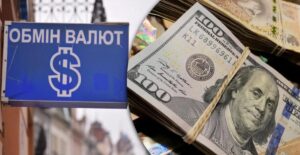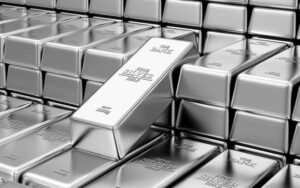
Gold and other precious metals rose on Monday amid events in Venezuela, which contributed to increased demand for safe-haven assets.
As reported, on January 3, US special forces conducted a special operation in Venezuela, capturing the country’s president, Nicolas Maduro, and his wife. Maduro will appear before a federal court in Manhattan, New York, on Monday, ABC News reported. He is expected to face drug trafficking charges that could result in multiple life sentences. US President Donald Trump said on Saturday that his country would temporarily take control of Venezuela.
The spot price of gold rose 2.1% during trading to $4,422 per ounce. Gold for February delivery on Comex rose 2.4% to $4,433.3 per ounce.
“Events in Venezuela have spurred demand for defensive assets as investors seek to protect themselves from geopolitical risks,” said KCM Trade analyst Tim Waterer. “Gold and silver were among the main beneficiaries.”
In 2025, gold rose 64%—the most since 1979—amid geopolitical tensions, lower interest rates, and high demand from global central banks. On December 26, the price of the precious metal rose to a record $4,549.71 per ounce.
The price of silver on the spot market rose 3.8% on Monday to $75.33 per ounce. At the end of last year, silver rose 2.5 times in price, which was its best annual performance. The price of the precious metal reached a record high of $83.62 per ounce on December 29.
The spot price of platinum rose 3.7% during trading to $2,220.3 per ounce, and palladium rose 2% to $1,671.7 per ounce.
Earlier, the Experts Club analytical center presented an analysis of the world’s leading gold-producing countries in its video on YouTube channel — https://youtube.com/shorts/DWbzJ1e2tJc?si=BywddHO-JFWFqUFA

According to the results of 2025, Ukraine’s national currency, the hryvnia, remained relatively stable overall, despite pressure from the war, high budget expenditures, and volatility in foreign markets, according to the Experts Club information and analytical center.
Throughout the year, the official hryvnia-to-dollar exchange rate showed moderate fluctuations within the established corridor, remaining under the control of the National Bank of Ukraine (NBU). The cash and interbank markets saw short-term surges in demand for foreign currency, mainly during periods of peak budget payments and increased import activity, but these were quickly smoothed out by the regulator’s currency interventions.
According to market participants, the key factors supporting the hryvnia in 2025 were regular inflows of international financial assistance, the preservation of administrative measures of currency regulation, and the NBU’s policy of supporting the attractiveness of hryvnia instruments. International reserves also played a significant role, remaining at a level sufficient to cover short-term external obligations throughout the year.
At the same time, the hryvnia exchange rate continued to be pressured by the structural external trade deficit, high military and social spending, and uncertainty related to the duration of hostilities and the volume of future external support.

Quotations on the interbank currency market of Ukraine (UAH per USD, period from 01.01.2025 to 31.12.2025)
Maksym Urakin, founder of the Experts Club analytical center, notes that 2025 was a period of “managed stability” for the hryvnia.
“The hryvnia is ending the year without any sharp devaluation shocks, which, in the context of full-scale war and high budget dependence on external financing, can be considered a cautiously positive result. The key stabilizing factor remained the coordination of monetary and fiscal policy with the support of international partners,” he said.
According to him, maintaining control over the currency market has helped to avoid panic among the population and businesses, but in the medium term, the risks for the hryvnia remain high.
“The further dynamics of the exchange rate will directly depend on the volume of foreign aid, the situation on the front lines, and the pace of economic recovery,” Urakin stressed.
Inflationary processes in 2025 also remained one of the sensitive factors for the currency market. Rising consumer prices increased demand for currency from the population, but this effect was partially offset by monetary policy measures and the maintenance of capital movement restrictions.
The NBU has repeatedly emphasized that its exchange rate policy remains flexible and adaptive, and that the regulator’s priority is financial stability and inflation control, rather than achieving formal exchange rate targets.
Experts note that in 2026, the hryvnia’s dynamics will largely depend on the pace of economic recovery, the volume of international aid, and decisions on further currency liberalization.

Ukraine ranked fifth among countries that were sources of accumulated foreign direct investment (FDI) in Cyprus in 2024, reports the Experts Club information and analytical center.
The total volume of accumulated inward FDI in 2024 is estimated at €365.07 billion, with Ukraine accounting for €10.64 billion, or 3% of the total.
Russia remains the largest source of investment with €83.46 billion (23%), followed by the United States with €66.57 billion (18%), Luxembourg with €32.10 billion (9%), the United Kingdom with €17.17 billion (5%), Ukraine – €10.64 billion (3%), the Netherlands – €6.90 billion (2%), and Israel – €5.10 billion (1%).
In addition, the data mentions the Cayman Islands (€8.4 billion), other countries in the Middle East (€7.6 billion), the Marshall Islands (€3.5 billion), and the British Virgin Islands (€2.4 billion).
The Central Bank of Cyprus also notes a decrease in the total volume of accumulated FDI: from €489.4 billion in 2022 to €394.0 billion in 2023 and €365.07 billion in 2024; The figure for Russia for this period fell from €135.7 billion to €83.46 billion.
The Central Bank of Cyprus notes that this refers to FDI “positions” (the accumulated volume of equity participation and intra-corporate loans), rather than new investment flows into the real economy.

The Experts Club analytical center has published a video study on silver production in the world by leading countries in 1971-2024, which shows the long-term restructuring of production geography and the strengthening of the role of Latin America and a number of Asian countries.
According to the study (source: BGS), Mexico will remain the largest silver producer in 2024 with 7.43 million kg, having been the undisputed world leader in silver production for 15 consecutive years. It is followed by China with 3.389 million kg and Peru with 3.065 million kg. The next group of producers includes Russia (1.604 million kg), Poland (1.534 million kg), Bolivia (1.495 million kg), Australia (1.218 million kg), the United States (1.097 million kg), Chile (1.049 million kg), and Kazakhstan (878,000 kg).
The top 20 for 2024 also included Argentina (775 thousand kg), India (769 thousand kg), Canada (410 thousand kg), Sweden (372 thousand kg), Indonesia (325 thousand kg), Uzbekistan (258 thousand kg), Morocco (224,000 kg), Papua New Guinea (137,000 kg), Brazil (102,600 kg), and Turkey (96,130 kg).
The study notes that over the decade, the centers of production have changed: some countries have increased output by expanding polymetallic projects, where silver is often a by-product, while leadership has gradually consolidated among large producers with a stable raw material base and developed processing.
Commenting on the results, Experts Club founder Maxim Urakin emphasized that the long series from 1971 to 2024 shows not just a “race” between countries, but investment cycles and a structural shift in demand: “Silver is increasingly perceived as a strategic metal — both for industry and for investors, so understanding who has been increasing production for decades and how helps to assess future risks of shortages and price spikes.”
According to analysts’ estimates, the value of silver in 2025 rose by a record 128.47%, which was the best result among major assets and exceeded the dynamics of gold (+66.59%) as well as the largest crypto assets, which ended 2025 in negative territory (BTC -5.75%, ETH -11.58%).
The video analysis is available on the Experts Club YouTube channel –

The visualization of the dynamics of the top 20 countries by GDP at purchasing power parity (PPP) for 1991-2024 from the Experts Club analytical center, which went viral on social media, is generally confirmed by international statistics: in 2024, the world’s largest economies in terms of GDP (PPP) China, the US, and India.
According to World Bank data on GDP, PPP (current international $), in 2024, China’s GDP in PPP was estimated at $38.19 trillion, the US at $29.18 trillion, and India at $16.19 trillion. The top ten economies by this indicator also included Russia (4th place), Japan (5th place), followed by Germany, Indonesia, Brazil, France, and the United Kingdom.
The Experts Club notes that the “race” from 1991 to 2024 reflects a long-term shift in the weight of the global economy towards Asia. At the start of the period, developed economies were the leaders, but then markets with large populations and domestic demand grew rapidly, and China and India gradually established themselves among the leaders.
“GDP at PPP does not show ‘wealth in currency’, but rather the scale of the economy, taking into account how many goods and services can actually be purchased within the country. Therefore, PPP better describes the domestic market and consumption potential, while for foreign trade, debt, and capital inflows, it is important to look at nominal indicators in parallel,” commented Maxim Urakin, founder of the Experts Club analytical center and candidate of economic sciences.
The GDP indicator in PPP terms converts the size of the economy into “international dollars,” taking into account differences in price levels between countries, so that the comparison is more accurate than when converted at market rates.
The video analysis by the Experts Club analytical center is available at the link: